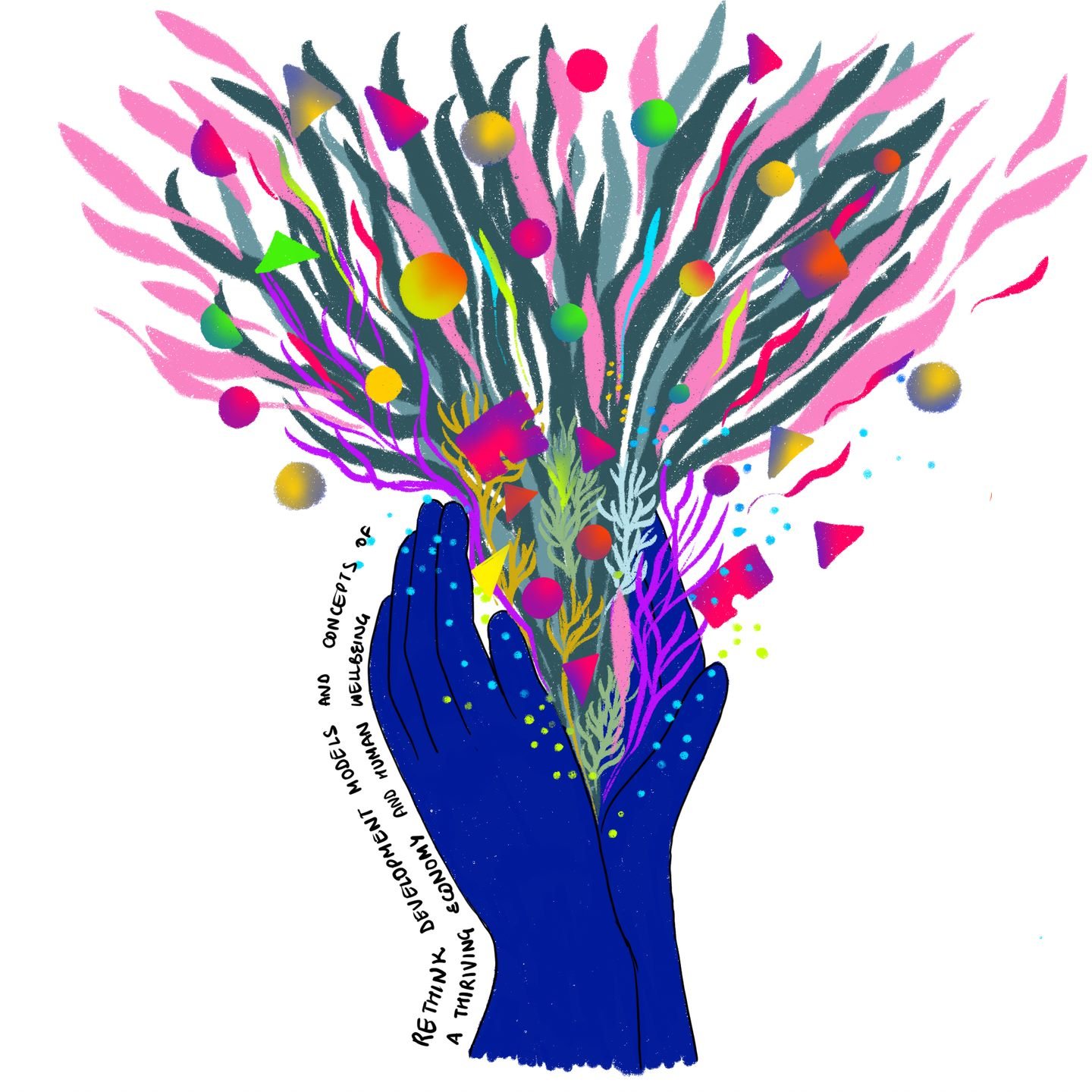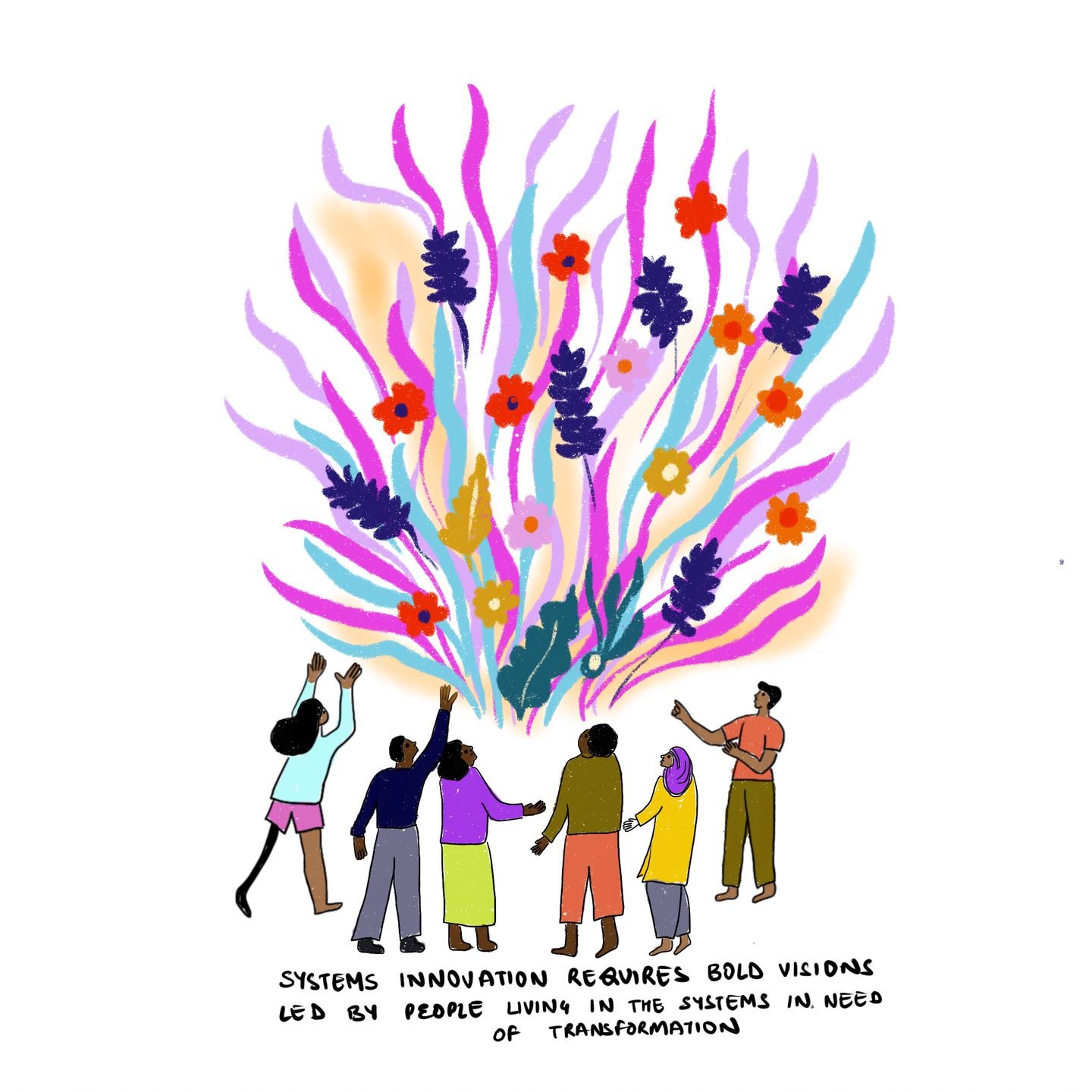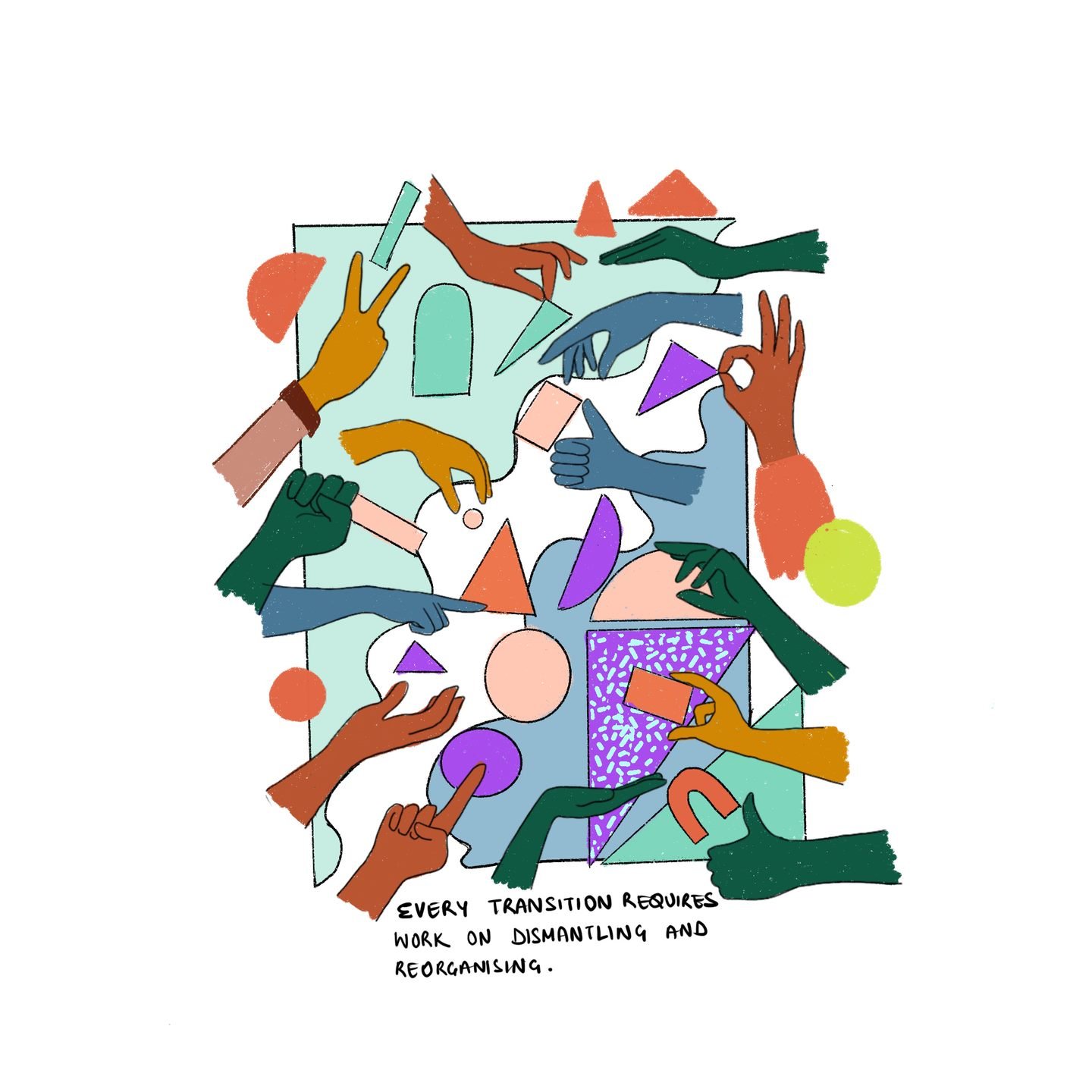Systems Innovation Blog Series - Part Two: Why Systems Innovation?
By Benjamin Kumpf (OECD), Nina Strandberg (Swedish International Development Cooperation Agency) and Robbie Barkell (UK Foreign, Commonwealth and Development Office). Illustrations by Vidushi Yadav.
*Disclaimer: The views expressed in this blog series are the authors’ own and do not reflect the official positions of their home organizations, and not of the International Development Innovation Alliance.
In this five-part blog post series we share some of our lessons on advancing systems innovation practices in bilateral development organizations. With this, we seek to advance conversations on improving innovation efforts in the international development sector. In the first post, we describe what systems innovation is. In this second post, we make the case for systems innovation. The third post discusses some lessons from international development cooperation that inform our approach. In the fourth post, we present promising practice and building blocks of systems innovation. The final post shares five questions to help advance systems innovation practices in international development organizations.
“Who and what gets fixed in place to enable progress? What social groups are classified, corralled, coerced and capitalized upon so others are free to tinker, experiment and engineer the future?”
(Ruha Benjamin)
The coronavirus pandemic has put the power of innovation to address a global crisis on full display. Right along with its limitations. COVID-19 vaccines were developed in record-time, yet we are witnessing exacerbated inequalities with regard to vaccine access, and as a result of pandemic measures across countries. The COVID vaccine demonstrates the centrality of innovation to address crises, and the impossibility of a single solution to unfold its potential in complex systems that produce inequitable outcomes.
Right after the outbreak of the SARS-CoV-2 coronavirus in early 2020, scientists in numerous countries started work on a vaccine. In less than 12 months, the vaccine developed by Pfizer and BioNTech became the first fully tested immunization to be approved for emergency use in the UK, USA and Canada, with other countries following suit. To put the timeframe of less than 12 months into perspective: the fastest vaccine development to date had happened in the 1960s for mumps and took four years, from viral sampling to approval. Vaccine development takes on average 10-15 years.
And yet, the COVID vaccine, this important technological innovation, is not attaining its potential positive impact as it is nested in multiple complex systems that produce inequitable outcomes.
The creation of Covax, a global initiative aimed at equitable access to COVID-19 vaccines led by the public-private global vaccine alliance Gavi, is a deliberate attempt to reshape a complex global system in pursuit of more equitable outcomes. The design of Covax and its success is heavily influenced by geopolitical dynamics and multiple social and technological systems. These includes systems governing national and international patent rights, immunization management and healthcare services, and incentive systems for vaccine manufacturing, along with research and development (R&D) programmes in high-income countries. In high-income countries such as the USA, R&D programmes channel significant public funding to pharmaceutical companies to run later stage drug development trials. But these come without noteworthy conditions on the affordability or accessibility of these drugs. Since the 2003 SARS outbreak, the United States has spent nearly $700 million of taxpayer money on coronavirus research without guarantees that the outcomes of the publicly supported research will benefit the public interest.
At the time of writing this post on 13 September 2021, Covax has delivered more than 270 mission COVID-19 vaccine doses to 141 countries . Yet, the total doses pledged by Covax to countries in Sub-Sahara Africa is projected to only cover about 300 million people, or 20% of the continent’s population. At the same time, the EU has ordered doses to vaccinate its population 2.7 times over, the US can vaccinate each citizen twice.
Appeals led by the World Health Organization, the People’s Vaccine Alliance and others to openly share vaccine patents and technologies have garnered traction. The US administration expressed support for waiving intellectual property protections for coronavirus vaccines, following a proposal from India and South Africa last autumn at the World Trade Organization. An agreement would provide legal clarity to protect generic manufacturers from retribution. But it is likely to have limited effect on global vaccine equity as manufacturing capacities in low and middle-income countries are limited and diverting existing vaccine capacity would negatively affect ongoing immunization programmes. There is a lack of technology transfer mechanisms and voluntary licensing agreements, exacerbated by insufficient risk-tolerant public subsidies for new market entrants.
So despite ground-breaking innovation capabilities to develop technological solutions, humanity cannot innovate itself out of a global pandemic by relying on the mere existence of that technology. Not only does the global vaccination system fail to produce equitable outcomes for people across the globe. Other complex social and technological systems are also not able to produce outcomes that meet human needs and respect planetary boundaries.
Arguably, innovation plays an important role in achieving global development goals. However, for innovation efforts in international development to advance transformations, we need a shift from the current focus on technological solutions to a wider range of innovations. Enter systems innovation, “an interconnected set of innovations, where each influences the other, with innovation both in the parts of the system and in the ways in which they interconnect” as per the definition of a Nesta discussion paper from 2013. EIT Climate KIC frames systems innovation as “integrated and coordinated interventions in economic, political, technological and social systems and along whole value chains”. Both definitions emphasize the importance of intent and a set of interconnected interventions and innovations as a portfolio of experiments that evolves over time.
Over the past year or so we have been advancing systems innovation in our agencies, and together as a working group of the International Development Innovation Alliance (IDIA). As we are now starting a learning journey with colleagues from the Systems Innovation Initiative of the Rockwool Foundation and other IDIA members, we are here sharing some notions that lead practice in our sector. The systems innovation practices we identified in our agencies are often not featuring an innovation label, and they are informed by principles that are likely to challenge some notions which all too often underpin traditional development innovation.
As a starter, our work is premised on the assumption that technological progress alone will not suffice to advance the needed deep transformations in our economies and societies.
This premise of course contradicts the assumption that technological innovation is the fundamental driver of history. Arguably, inventions and technological advancements were important drivers of transformations that shape our economies, societies and natural environment since 1760. The year marks the beginning of the Industrial Revolution, which was followed by several waves of technological progress. Breakthroughs in steel production, engineering and decades later in information and communication technologies transformed societies and economies in Western countries. These technologies then spread across the globe, inextricably linked to the history of colonialism.
Technological innovations enabled massive improvements in areas such as public health, agriculture and education. But in our view, technological progress does not determine the shape of social developments. It is rather the increasingly complex relationships between technology, society, and economics, and the dynamic interplay of these systemic factors with the actions of individuals, and social movements.
Technological innovations and societal changes led to global economic activity that now transgresses natural boundaries and accelerates environmental degradation. Humanity is on course towards nine tipping points. Effects of climate change could push parts of the earth system into abrupt or irreversible change, threatening human existence on a global level. Profound transformations of economic, financial and social systems are needed.
We need to rethink development models, and concepts of a thriving economy and human wellbeing within planetary boundaries.
“For over 70 years economics has been fixated on GDP, or national output, as its primary measure of progress. That fixation has been used to justify extreme inequalities of income and wealth coupled with unprecedented destruction of the living world. For the twenty-first century a far bigger goal is needed: meeting the human rights of every person within the means of our life-giving planet”, as Kate Raworth argues. For example, in our agencies we support partners in low and middle-income countries as well as cities and regions in OECD member states with advancing circular economy concepts.
The transformations of the 21st centuries require strategic intent.
The Industrial Revolution and following waves of transformations were triggered by the invention and diffusion of new technologies. They were not pre-defined and desired by any one set of stakeholders, but rather emergent change processes that formed and coalesced over periods of time. As such, the systems innovation we are pursuing is of a different nature, as stakeholders drive intentional transformations.
Such intent sits on a different level of abstraction compared to measurable objectives we find in development programmes, and their underpinning mindset of predictability and linearity. “Intent is more closely related to the idea of purpose. While objectives are met (or not) over time, intent endures but may have to be renewed from time to time”, as the authors of the White Paper ‘Transformation Capital: Systemic Investing for Sustainability’ describe. So an intent might coalesce around health security as well as equitable health outcomes and wellbeing, shared not only by public sector agents and development organizations but importantly also by civil society organisations and affected populations.
Government and the public sector have important roles in shaping innovation trajectories towards societal goals.
Measurable objectives can be derived from such intent, for example in the shape of a measurable, time-bound mission. Over the last years, we have witnessed the renaissance of mission-oriented innovation discourse and policies, particularly across the European Union and in some countries in Latin America.
The approach, inherently systems-focused, sets out to tackle complex challenges by taking a purpose-oriented market-shaping approach: the public sector takes an active role in convening and coordinating actors around complex, cross-sectoral issues that cannot be solved by one stakeholder or sector alone. A measurable, ambitious and time-bound mission is derived from the challenge, for example, to become a carbon-neutral city by 2030. Mariana Mazzucato argues that “for too long, people have acted as if the private sector were the primary driver of innovation and value creation and therefore were entitled to the resulting profits. But this is simply not true. Pharmaceutical drugs, the Internet, nanotechnology, nuclear power, renewable energy—all were developed with an enormous amount of government investment and risk taking, on the backs of countless workers, and thanks to public infrastructure and institutions.” This discourse has resulted in renewed visibility of the public sector as a key system shaper and transformer of markets, and it implores governments to apply this role to address 21st century challenges.
Applying such a lens to the current global challenge of vaccine equity suggests a redesign of incentive systems for vaccine manufacturing, R&D programmes and licensing rights. Such a market-shaping approach towards more equitable outcomes is likely to generate losses for some players. This in turn challenges dominant notions of innovation as well as industry incumbents.
Such a turn also entail focused support of innovation processes led by people in low and middle-income countries. For example, a study from the OECD Innovation for Development Facility from April 2020 found that one-fifth of the innovative solutions to fight the Covid-19 pandemic have emerged from low and middle-income countries. These responses offer promising insights for how we think about, manage, and enable innovation.
As the COVID-19 crisis continues to challenge vaccine equity, the authors suggest that more attention and resources must be directed to the innovators who are developing technically novel, contextually relevant, and socially inclusive alternatives to mainstream innovation management practices.
A 2019 OECD report on innovation across bilateral development providers found that “the lack of genuine and sustained engagement with the global South is a widespread problem, and should be addressed directly and collectively to ensure that innovation efforts are more relevant, appropriate and build on the best ideas from around the world.”
Systems innovation requires bold visions, led by people living in the systems in need of transformation.
The challenge to improve innovation practices in international development goes beyond testing and scaling specific technologies and financing modalities. Even prior to the COVID-19 crisis, the ability of governments as well as social movements to imagine radically different futures seems to have weakened over the last decades. Collectively, we are arguably lacking visions of desirable positive alternatives on how our democracies, care systems, neighbourhoods or transportation systems might thrive tomorrow and in 40, 50 years or several generations out. This ‘imaginary crisis’ provided the space for high net-worth individuals and tech giants to emerge as global systems innovation leaders, players who set out to change the world while also profiting from the status quo. Accordingly, the grand challenges of our time such as climate change, social inequalities or biodiversity loss are largely framed and “recast in the light of a winner’s gaze”.
Innovation, as development, is inherently political.
In international development, innovation might be, but mustn’t be, a win-win scenario. Innovation means changing the status quo, and this might mean loss of privileges for some. Especially in the Global North, the way we think about innovation is massively influenced by Silicon Valley paradigms. This includes the notion that innovation is best pursued by the private sector and that social change can be most efficiently advanced by creating a business. Social movements, indigenous communities, grassroots innovators and other players from the Global South that pursue different innovation approaches and present radically different visions for the future still remain on the margins of our practices.
Engaging more closely with social movement from the Global South entails challenging some of the very notions of systems innovation we present in this blog series, and alternatives to international development as it exists today. For example, critics of international development such as Arturo Escobar and Gustavo Esteva argue that the idea that all countries must develop along Western lines should be rejected. Both argue that the focus on an individual as central agent and beneficiary of development functioned as “a Trojan Horse by which Western nations infused their ideology of development—including private property, secularism, and anthropocentrism—into traditional, communitarian ways of being.”
Supporting diverse voices and actors in advancing systems transformations requires a pluralistic approach. A commitment to create a world in which many worlds fit.
This vision guides our pursuit of systems innovation. “Every transition requires work on dismantling and reorganising. Because we tend to focus on the new, however, the lock-ins are often ignored, and this prevents us from moving forward”, writes Indy Johar from Dark Matter Labs.
Decommissioning, addressing the lock-in’s head-on, is arguably one of the toughest aspects of innovation. It entails individual change and unlearning for us as individuals. Our work on systems innovation intersects with debates on transforming development business models, with discourses and efforts to decolonize aid, and shifting decision making power to organizations and people living in the very systems we seek to transform. As we engage with new partners and learn, we will share our reflections on the intersections to the aforementioned debates and movements over the course of the next years.
In the IDIA working group on systems innovation we seek out innovators, activists, and other change makers from low and middle-income countries. If you are interested in working with us, please leave a comment and we will get in touch. Our intent is to support our partners with leading transformation efforts. To listen, identify emerging practice, weak signals for change and relevant new partners and alliances. And then largely step aside and shift decision-making power over resources as much as possible to these actors.
“Systems and institutions don’t change because it’s the right thing to do, it changes because there is an articulated value proposition and a designed alternative. If we can rigorously analyse these strands, then we can finally move away from esoteric, grey, proclamations of change, to doing the gritty work of hard transformations”, as Aarathi Krishnan states.
We would like to thank Ben Ramalingam for his kind and critical support throughout the drafting process of this blog. Huge thanks also to Aarathi Krishnan (United Nations Development Programme), Alan AtKisson (Swedish International Development Cooperation Agency), Ammaarah Martinus (Western Cape Government), Anne Germain (Global Affairs Canada), Asha Meagher (OECD), Angela Hanson (OECD), Antony Herrmann (UK Foreign, Commonwealth and Development Office), Constance Agyeman (Nesta), Dave Milestone (McKinsey) Dominik Hofstetter (Climate KIC), Emma Foster (UK Foreign, Commonwealth and Development Office), Karlee Silver (Grand Challenges Canada), Morag Neill-Johnson (Results for Development), Peer Priewich (German Corporation for International Cooperation GmbH), Rahul Malhotra (OECD), Will Spencer (USAID Centre for Innovation and Impact) and Yara van Heugten (Dutch Ministry for Foreign Affairs) for critical and constructive feedback on earlier versions of this blog series.




